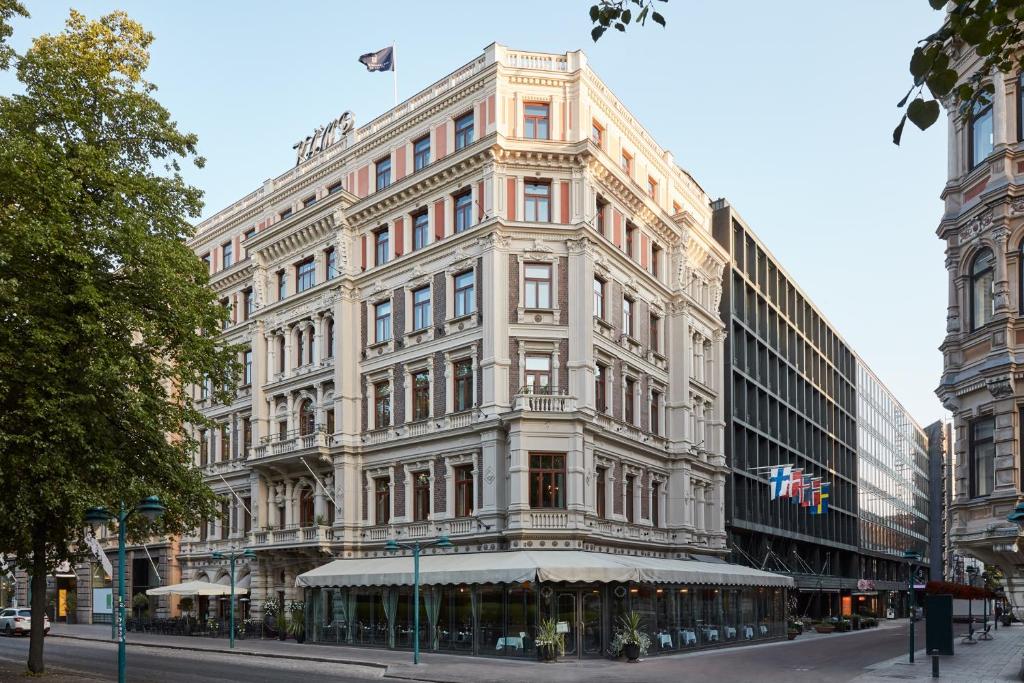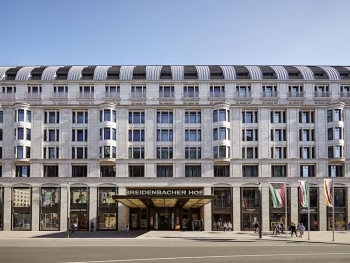Hotelli Kämp stands as a paragon of luxury, history, and cultural significance in Helsinki, Finland. Established in 1887, this iconic hotel has witnessed and adapted to the evolution of the city around it, becoming an integral part of Helsinki’s architectural and social fabric.
Origins and Early History
Hotelli Kämp was founded by Carl Kämp, a businessman with a vision to create a world-class establishment in the burgeoning city of Helsinki. At the time, Helsinki was transforming rapidly, aspiring to become a modern European capital. Kämp’s ambition was to provide a luxurious haven that matched the sophistication of hotels found in Paris, London, and Berlin.
Designed by architect Theodor Höijer, the hotel’s architecture reflected the grandiose neo-Renaissance style, which was popular in Europe during the late 19th century. Its opulent interiors, complete with lavish decorations, fine dining rooms, and elegantly furnished rooms, quickly attracted the city’s elite and visiting dignitaries.
The Golden Era
In the late 19th and early 20th centuries, Hotelli Kämp became a cultural and social hub. It was not just a place to stay but a venue for grand events, political meetings, and artistic gatherings. Notable figures such as composer Jean Sibelius and writer Eino Leino frequented the hotel, making it a breeding ground for creative and intellectual exchange.
The hotel’s reputation for luxury and excellence was solidified through its meticulous attention to detail and impeccable service. Its restaurant became renowned for offering exquisite cuisine, influenced by both local Finnish ingredients and international culinary trends. The bar, meanwhile, became a favorite spot for Helsinki’s high society to socialize and discuss the issues of the day.
Wartime and Decline
The tumultuous period of the 20th century, including the Finnish Civil War and the Second World War, posed significant challenges for Hotelli Kämp. During these times, the hotel served various purposes, including housing soldiers and operating as a temporary headquarters for military officials.
The post-war era saw a decline in the hotel’s fortunes. The once-glamorous establishment began to fade, and by the late 1960s, it was no longer the beacon of luxury it had once been. In 1965, the original building was demolished, and for a time, it seemed that the legacy of Hotelli Kämp would be lost to history.
Revival and Modern Era
The 1990s brought a renaissance for Hotelli Kämp. In 1999, after extensive reconstruction and restoration, the hotel reopened, carefully designed to evoke the grandeur of its original incarnation while providing all the modern amenities expected by contemporary travelers.
The revival of Hotelli Kämp was more than a restoration of a building; it was a rekindling of a historic legacy. The new structure was designed by architect Pekka Helin, who ensured that the hotel’s historical essence was preserved while incorporating modern luxury and comfort. The interiors were lavishly decorated, featuring a blend of classic elegance and contemporary style, with carefully chosen art and furnishings that paid homage to the hotel’s storied past.
Today, Hotelli Kämp is part of The Leading Hotels of the World, a prestigious collection of luxury hotels renowned for their exceptional standards of service and quality. It offers 179 rooms and suites, each designed to provide a unique experience of comfort and sophistication. The hotel’s facilities include the Kämp Spa, a luxurious sanctuary offering a range of treatments and wellness services, and several fine dining options that continue the tradition of culinary excellence established over a century ago.
Cultural and Social Impact
Hotelli Kämp has not only provided luxury accommodations but has also been a significant cultural institution in Helsinki. It has hosted numerous events, including art exhibitions, literary readings, and political gatherings, cementing its place as a center of cultural life in the city.
The hotel’s bar and restaurant continue to be popular meeting places for Helsinki’s residents and visitors alike. The Kämp Brasserie offers a menu that blends Finnish traditions with international flavors, while the Kämp Bar serves as a stylish venue for both casual drinks and sophisticated socializing.
A Symbol of Resilience
Hotelli Kämp’s history is a testament to resilience and adaptation. From its grand opening in 1887 through periods of war and decline, and finally to its revival in the late 20th century, the hotel has continually evolved to meet the needs of its guests while preserving its unique heritage.
As Helsinki continues to grow and change, Hotelli Kämp remains a steadfast symbol of the city’s rich history and vibrant culture. Its commitment to excellence and its ability to blend tradition with modernity ensure that it will continue to be a cherished landmark for generations to come.
Hotelli Kämp stands as a microcosm of Helsinki’s transformation over the past century. Its story is one of ambition, decline, and rebirth, mirroring the fortunes of the city itself. Today, it remains a beacon of luxury, a hub of cultural activity, and a testament to the enduring appeal of timeless elegance and exceptional service. Whether for a brief stay or a grand event, Hotelli Kämp offers an experience that is both steeped in history and perfectly attuned to the demands of the modern world.












